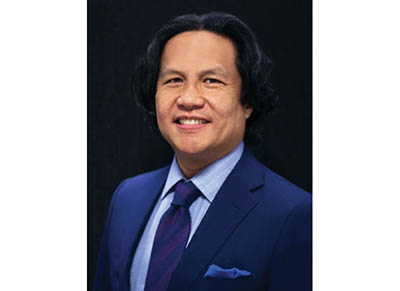— By Alec Zaballero —
A conversation with TPG Architecture about trends in retail design — and how digital-first brands can successfully move into brick-and-mortar.
R&R: Thank you so much for your time! Before diving in, our readers would like to get to know you. Can you tell us a bit about yourself and what trends you are seeing in the retail industry?
Alec Zaballero: In my role as managing executive at TPG Architecture, I oversee the firm’s retail, hospitality, restaurant, and entertainment design practices, with a keen focus on luxury retail, high-profile brands and creating immersive environments. I lead efforts in strategic reuse, master planning and building reconfiguration, aiming to optimize space and functionality. Throughout my career, I’ve been involved in prestigious projects where I’ve showcased a blend of design vision, management prowess and technical expertise.
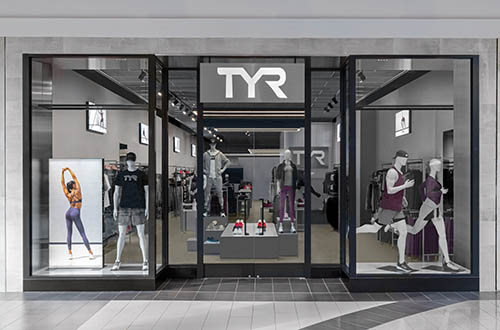
One of the biggest trends we have been seeing in the last few years is the influx of high-end digital-first brands venturing into physical retail spaces. These spaces represent a departure from the kind of retail stores we’ve been used to. They’re more akin to shoppable showrooms. We’ve worked with a number of these brands including TYR, Birkenstock and Boll & Branch on strategies for designing and implementing prototype stores to create seamless omnichannel experiences.
R&R: What has led to this growing trend of high-end digital-first brands venturing into physical retail spaces? Why is brick-and-mortar important for these brands?
Zaballero: The physical store is important to high-end digital brands for several reasons. Firstly, a brick-and-mortar store validates and establishes the credibility of the brand for its customers. In an environment where online brands may appear as mere illusions, the physical store stands as tangible evidence of the brand’s solidity, authenticity and trustworthiness.
Secondly, a physical store creates the opportunity for customers to engage directly with the brand, to touch the product and to absorb the brand story. Lastly, online brands have found that a physical store generates not only traditional foot traffic, but also triggers a significant increase in online sales from the surrounding area.
R&R: Can you discuss the design process of creating prototype stores for luxury digital-first brands?
Zaballero: The advantage of designing for an online-first brand is that they have spent a lot of time and effort defining their brand and differentiating from their competitors in the online space. So they understand themselves and who their customer is. However, a challenge for the store designer emerges when working with an online brand inundated with ‘digital noise.’ In these cases, the store designer must immerse themselves in the brand, sift through the digital clutter, distill its essence to its core and adeptly translate it into physical design elements and language that effectively convey the brand message.
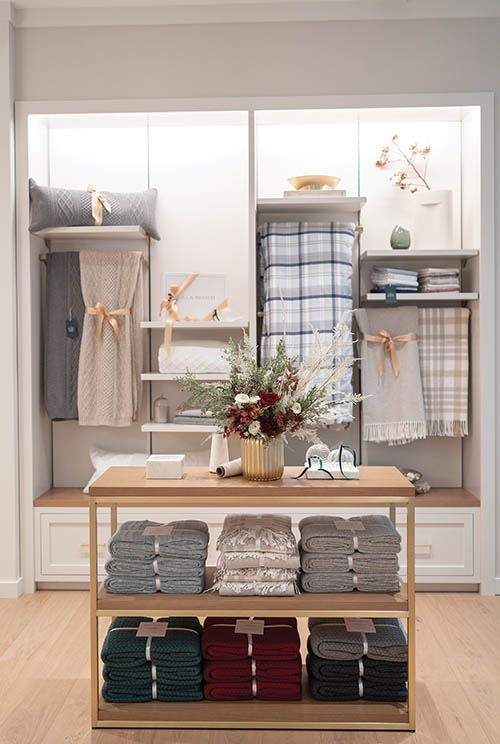
An online brand’s prototype store design ensures that all the brand’s core elements are present while allowing for flexibility to tweak as needed for new markets. One project for which we’ve implemented this approach is the development of TYR’s prototype concept for their expansion into the brick-and-mortar space. By meticulously integrating TYR’s digital-first ethos into the physical realm, we’ve crafted a prototype store that not only captures the essence of the brand but also adapts seamlessly to diverse market demands. TYR’s Roosevelt Field location [in Garden City, New York], serves as a blueprint for its continued expansion strategy, guiding the development of full-line stores, factory outlets and temporary locations. With this model in place, TYR offers customers a cohesive brand experience across all touchpoints.
R&R: How does design play a role in maintaining brand consistency across digital and physical channels?
Zaballero: The brand’s primary customer already ‘knows’ the brand from online interactions. Extensive efforts have been dedicated to crafting the online brand experience and fostering engagement with customers. Consequently, when these core customers step into the physical store, it’s crucial to ensure an immediate sense of familiarity, fostering a seamless continuation of the brand relationship.
I often compare digital bands to online dating. In the online relationship phase, the brand has told you who they are. The first store visit is like the first physical date — where the established rapport transitions into a tangible, real-world connection.
This transition is facilitated by a deliberate design strategy, which is exemplified in our work with Boll & Branch. Here, the design intent was clear: to solidify the brand’s vision in a physical space that seamlessly extends the digital experience. Within the store, our team embraced the warmth and sophistication of a modern-traditional residence, creating an environment that invites customers into the heart of their dream home.
R&R: What informs the location selection for digital-first brands entering brick-and-mortar retail? How do you use that information to guide the design?
Zaballero: Digital-first brands building their first physical stores in select locations where they already have a strong concentration of customers within the catchment area. We saw this play out with TYR’s selection of Roosevelt Field and Boll & Branch’s of The Mall at Short Hills [in Millburn, New Jersey]. These brands are also setting up shop in established shopping centers, such as outdoor retail plazas or Class A shopping malls, indicating a strategic move to bridge the gap between online and offline retail experiences.
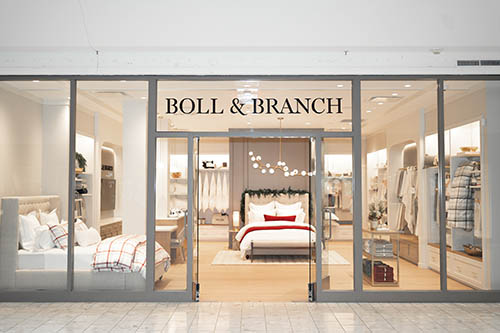
By establishing their first brick-and-mortar stores in these established shopping centers, brands can capitalize on the demographic alignment with their target customer base, both economically and sociologically, and offer an existing customer base as well as a population of potential new customers who can organically be converted into advocates of the brand.
This strategic location selection profoundly influences the store design process. It underscores the brand’s upscale offering and its emphasis on lifestyle-driven products. When a luxury brand builds a store in a particular area, you have the combination of a targeted customer base with a particular set of lifestyle aspirations. Understanding these and finding the visual and environmental language that embodies these is critical, as the store design needs to echo those aspirations and offer the fulfillment of the customers’ lifestyle goals.
R&R: How does the store’s location influence its design?
Zaballero: A store’s location, more than anything else, reflects the target customer for the brand. Store locations are selected to reach that customer, and it’s the characteristics and aspirations of the customer that will drive the design.
There’s a lot that’s been said about “localization,” i.e. making direct references in the store environment to local landmarks or scenery, but in our experience, that strategy is only useful to the extent that it enhances the alignment of the store experience with the local expression of a lifestyle.
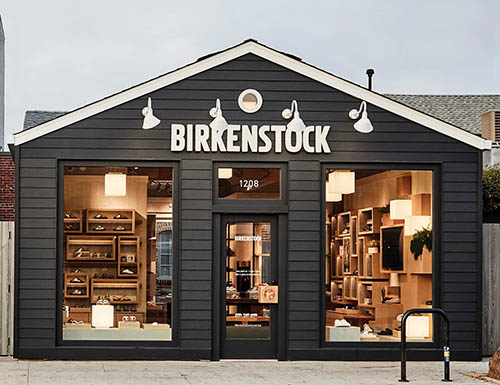
Birkenstock Abbot Kinney is a great project example where we integrated aspects of the local culture and trends to help the store resonate with the community it serves. Drawing inspiration from century-old bungalows scattered throughout the eclectic neighborhood, we meticulously designed the store to reflect the casual coastal aesthetic synonymous with Venice Beach. From the removal of postmodern stucco elements to the incorporation of clapboard siding and expansive windows, every detail was carefully curated to evoke a sense of timeless charm. Inside, the welcoming atmosphere mirrors that of a California-bohemian-inspired home, complete with light tones, lush greenery and soft lighting, creating a comfortable residential feel that transcends the typical shoe store ambiance. This approach not only enhances brand engagement but also fosters a sense of connection and belonging within the community, ultimately driving foot traffic and sales.
R&R: How do you ensure that the layout of the physical retail space enhances the overall customer experience?
Zaballero: It involves a comprehensive approach that prioritizes both functionality and aesthetics. Meticulous attention to layout design is crucial. By carefully planning the flow and navigation within the store, customers can move seamlessly through the space, enhancing convenience and reducing friction points. This means considering factors such as the placement of fixtures and strategic positioning of high-traffic areas.
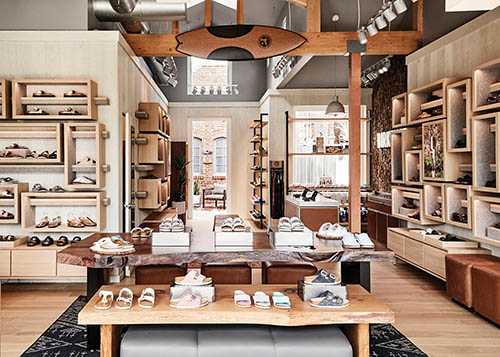
Visual merchandising also plays a pivotal role in captivating customers’ attention and encouraging exploration. Thoughtful placement of products, signage and displays can create an immersive and engaging environment that draws customers deeper into the store. For instance, at TYR, fixtures and displays are strategically designed to entice customers further into the space, with key collections positioned to maximize visibility and interest.
R&R: How does the incorporation of interactive elements into physical retail spaces enhance customer engagement? Can you provide examples of successful implementations and their impact on customer experience?
Zaballero: At TPG, we take the position that the entire store is an interactive element and that a successful customer engagement strategy is a meld of the physical store design, face-to-face interactions with associates and digital interactive elements.
The utilization of touchscreen displays, augmented reality (AR) experiences and dynamic product demonstrations to captivate customers and create lasting impressions. These interactive elements serve not only to entertain but also to educate, providing customers with in-depth product information and personalized recommendations tailored to their preferences — encouraging customers to explore and connect with the products on a deeper level.
— Alec Zaballero is managing director of TPG Architecture, LLP, a leading New York City-based design firm focused on creating interior environments that serve clients’ strategic objectives. Visit: www.tpgarchitecture.com.

